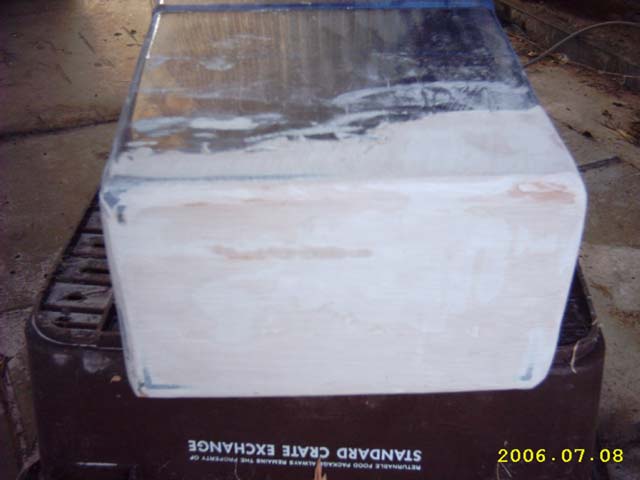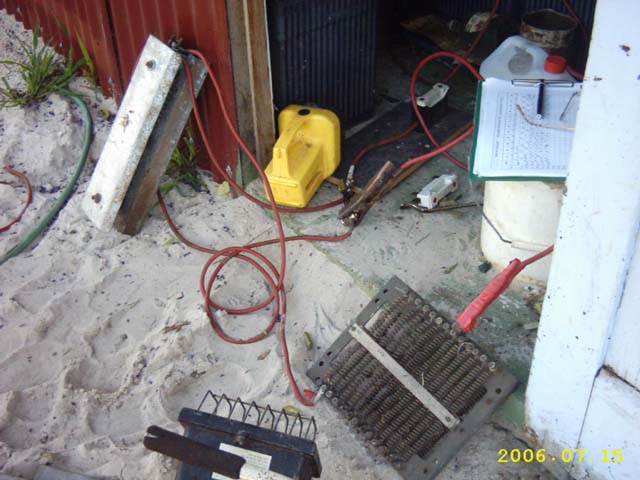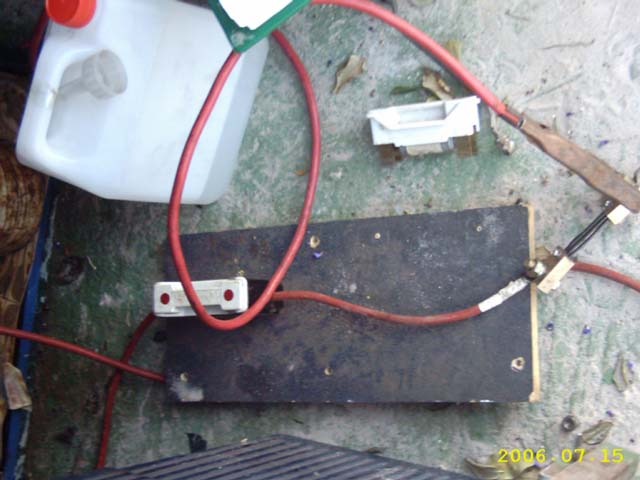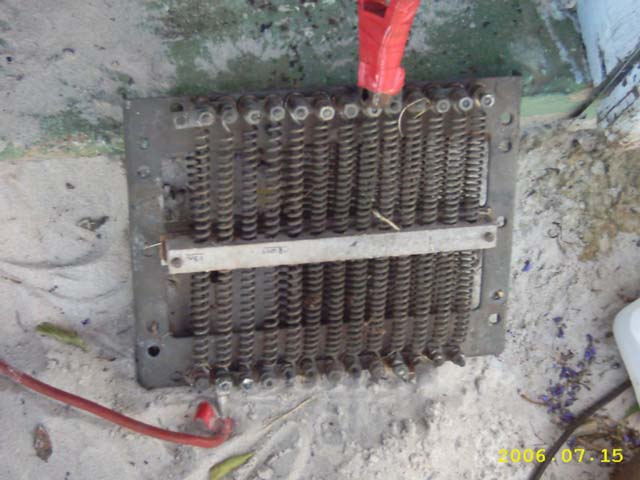I decided it was about time that I conducted a discharge test on one of my battery banks, it's at least 2 years since the last. Now my batteries are not new, the electrical dept. estimated they were 13 years old when I stole them in 2001.
They are 650 A/h Exide Fanur'e X , the case is clear plastic and is fretting on the bottom of a number of batteries, this is a pain and has created a cesspool of acid in my battery room. I repair each wayward battery with auto bog, seems to work fine, then refill it with new acid.

In preparation for this test I charged up all batteries and floated them for 5 hours @30V (24V system) I then isolated the bank to be tested. The test started early morning Sunday last, so early that I had to use a light to take readings (it's mid winter here minus the rain).
So taking voltage readings on each 2V cell then specific gravity (SG) I discovered that #1 battery had, apparently, only water in it??? Its voltage was 2.053, slightly under the others, so bugger what to do. I moved the cables to the adjacent bank, which had not been rested over night, but having made up my mind to conduct this test, having obtained the Sunday paper carton of Moselle and cheese platter it had to proceed.
So a new set of pre test readings was taken on the alternate bank, bugger one cell had lower volts and SG than all others, obviously a week link. So just hit the cask or press on regardless, with the placement of the fuse the test began.
I had a dump load resistor unit good for 40 A @ 24v and made up the remaining 25 amps with a resistor bank and jumper lead, sort of a variable resistor one could say.



Readings were taken every 15 min. of cell volts and SG, the test lasted 7.5 hours and was terminated when the weak ling reached 1.75v, the industry standard cut off point. At that point I had extracted 475 A/h, which simplistically equates to 75% capacity. However if one discounts the weak link and looks at the rate of voltage decay for the next lowest cell the test could reasonably have continued for another 30 minuets. Which would have equaled 80% capacity, however industry rating is at 25 deg C, my batteries were at 16 deg C (taken half way through the test), now applying the rate of 1% less capacity per deg C that's another 9%, if I keep going I will have 120% capacity batteries.
Now industry standard recommends replacing batteries @ 80% efficiency, however I have 96 of these suckers, in 8x 24 V banks so none of them are exactly overworked. So apart from the ongoing task of repairing casings I reasonably expect to get at least another two years from them.
The results in PDF format is quite a large file (780k),
http://www.otherpower.com/images/scimages/74/battery_test_results.pdf
On another point this may interest some new commers designing their own system. It relates to charge efficiency near top end of battery voltage, people like me miss out on about half the incomming amps at the higher volts if all batteries are in service.
http://www.sandia.gov/pv/docs/PDF/batpapsteve.pdf